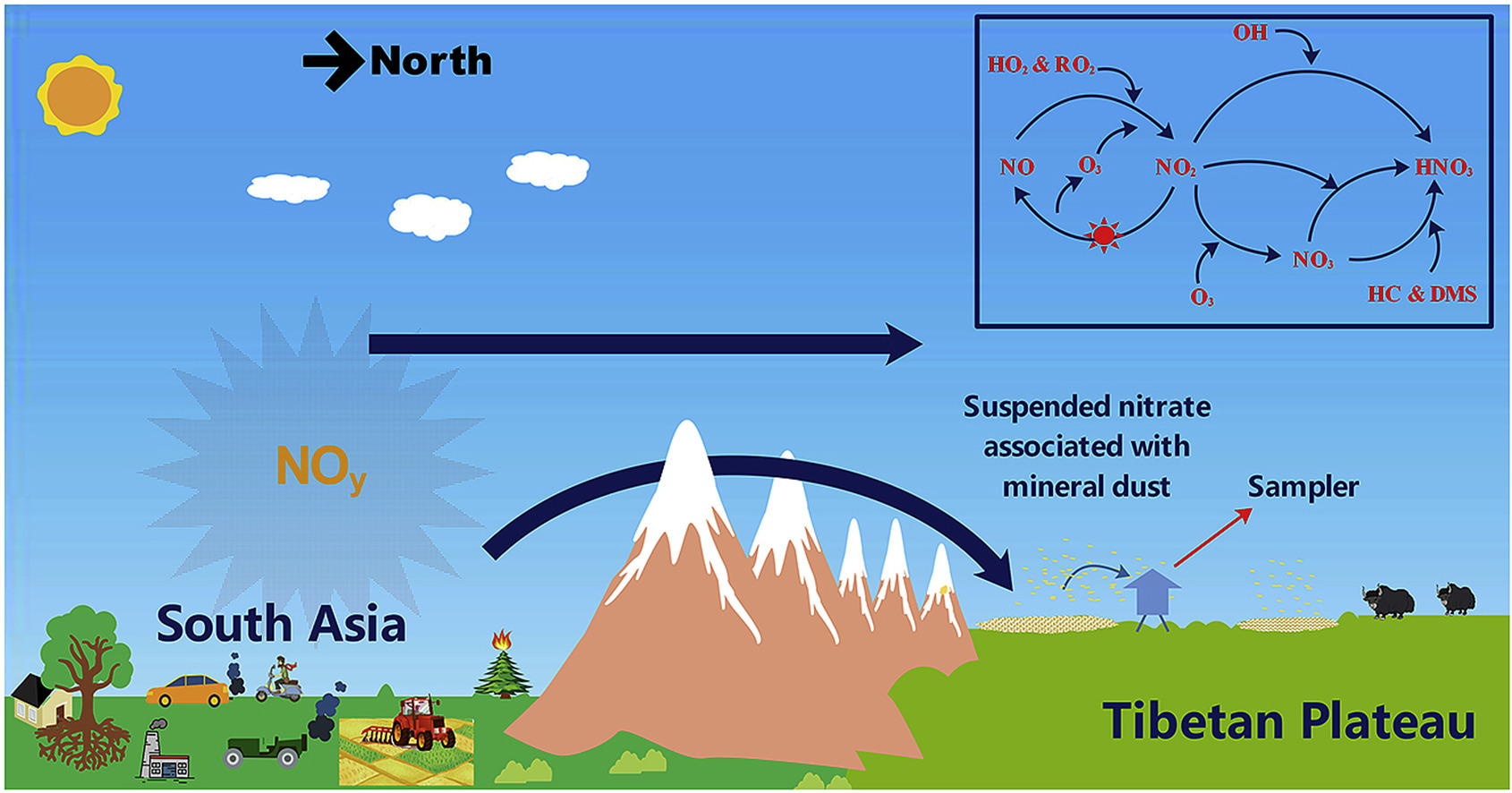
As one of the major chemical constituent of atmospheric aerosols, atmospheric nitrate as well as its precursors (NOx = NO+NO2) has an important impact on the environment and climate. The Tibetan Plateau (TP), known as the 'Third Pole', is one of the most pristine regions in the world. It has attracted much attention on its environmental changes that are partly caused by air pollutants from the surrounding countries.
Nevertheless, the formation mechanisms and sources of atmospheric nitrate in the TP region still remain unclear. A detailed study focusing on these scientific issues in this special region is necessary.
Recently, a research team led by Prof. KANG Shichang from the Northwest Institute of Eco-Environment and Resources (NIEER) of the Chinese Academy of Sciences, in cooperation with scientists at home and broad, has investigated the formation mechanisms and sources of atmospheric nitrate in the Mt. Everest region by applying an isotopic method for the first time.
According to the researchers, the oxygen isotope anomaly is fairly insensitive to mass-dependent fractionation, and thus can serve as a powerful tracer to investigate the relative importance of various nitrate formation pathways. Moreover, the distinct nitrogen isotopes (δ15N) for the different sources make δ15N a robust tracer for NOx source apportionment.
By analyzing the isotopic compositions of atmospheric nitrate collected from the northern slope of the Mt. Everest, the researchers found that the oxidation mechanisms of NOx changed among different seasons, i.e., O3 oxidation play a dominant role during the pre-monsoon season, while for the monsoon and post-monsoon seasons, the importance was altered to OH/HO2/RO2 oxidation.
In addition, the vehicle exhausts and agricultural activities in South Asia were found to be the main sources of NOx, which contribute significantly to the nitrate level in the Mt. Everest region.
The above findings provide important references for future studies focusing on evaluating environmental changes, atmospheric oxidation processes, and nitrogen deposition in the TP region.
This study has been published in an article entitled "Isotopic constraints on the formation pathways and sources of atmospheric nitrate in the Mt. Everest region" in the journal Environmental Pollution.

Schematic illustration of South Asia sourced nitrate aerosols transported to the Tibetan Plateau as well as its formation mechanisms in the troposphere. (Image by KANG Shichang)

86-10-68597521 (day)
86-10-68597289 (night)

52 Sanlihe Rd., Xicheng District,
Beijing, China (100864)

